Over the last year, there have been a number of weather stories about amazing light pillars caused by ice crystals suspended in the atmosphere. Most of the recorded displays have been captured in the extreme northern areas of the world.
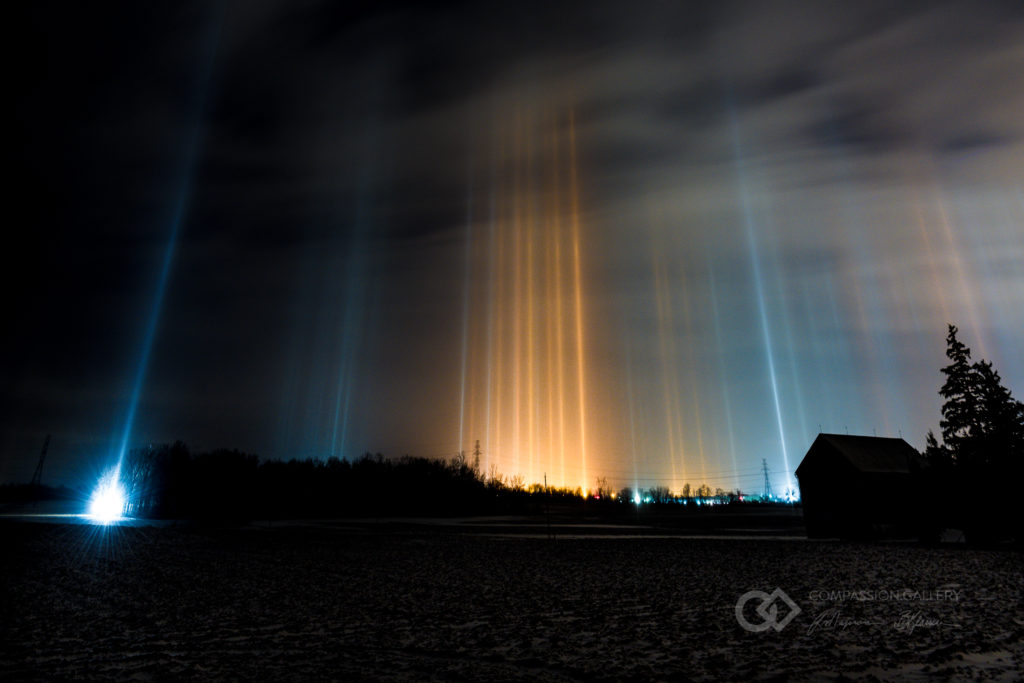
Bright Light – Nikon D850, Nikkor 24-70 2.8G, ISO 100, f/9, 20s
As an avid photographer in southern Canada who is particularly intrigued by the northern lights, I’ve sat at my desk drooling over some of the light pillar photos I’ve seen. Many of the pictures look like something I’d expect to see on Star Trek, X-Files, or another alien movie. I’ve even had people ask me if the existing light pillar images on the web are photoshopped. To think that this could actually be a real phenomenon, has made me want to see them that much more.
SO, WHAT ARE LIGHT PILLARS?
According to The Weather Network meteorologist Erin Wenckstern, “Light pillars are an atmospheric phenomena created when tiny ice crystals reflect either natural (sun or moon) or artificial light (such as streetlights). This type of ice crystal is flat and hexagonal in shape, and when they are suspended in the air, together they act like a gigantic mirror, reflecting the light source upwards or downwards.”
Wikipedia goes on to say, “In very cold weather, the ice crystals can be suspended near the ground, in which case they are referred to as diamond dust.”
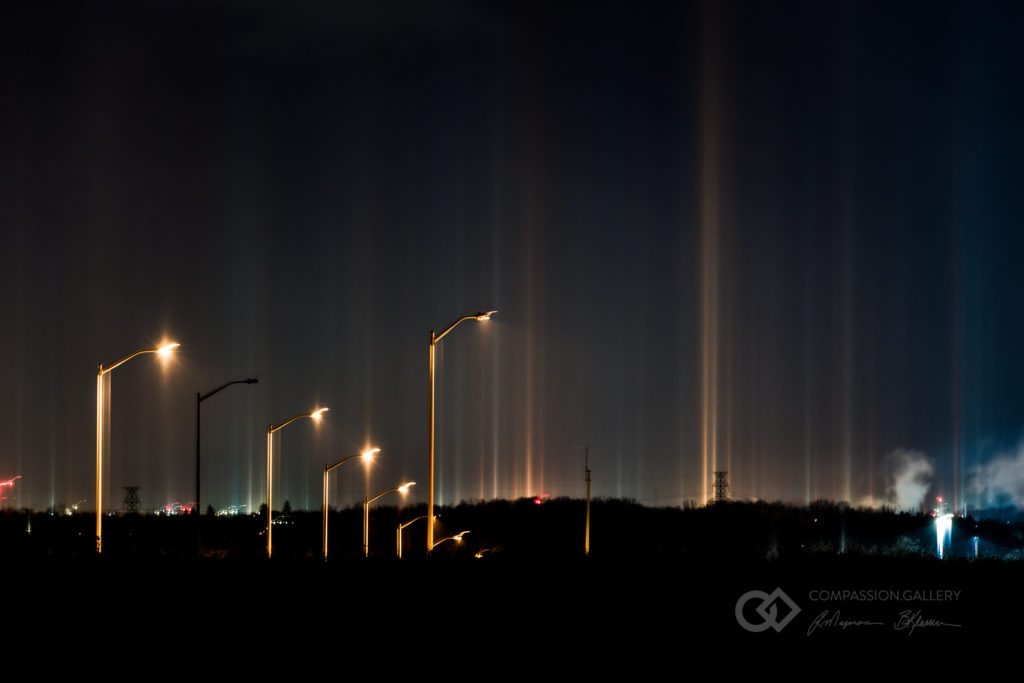
Street Lights – Nikon D850, Nikkor 70-200 2.8G, ISO 100, f/7.1, 15s
NEW YEAR’S EVE
On a very cold 2017 New Year’s Eve, I received a notification from Sara and Milan, friends of mine from London, Ontario where I reside.
“Ray, do you see the sky right now, the lights?”
Looking out my window and seeing nothing, I then found The Weather Network’s forecast for London: “Ice Crystals.” Sara and Milan proceeded to send me a cell phone picture of light pillars in their neighborhood. I could only stare in amazement, unable to drive to their location in time. The pillars were gone in under an hour.
Since then, I have been eagerly awaiting the next arrival of this marvelous weather event. Throughout this abnormally cold winter, I’ve seen light pillars a couple of times in the daytime, typically around a sunset. But up until the time of this article, I’d never actually seen them at night.
There’s also been some other spectacular winter weather in London, Ontario, but again, with it being so cold, I had been longing to see these mysterious light pillars.
JANUARY 13, 2018 – I received a text message at 9:48pm from my good friend Mike Lee, who was driving from St. Thomas to London. “My phone does not come anywhere close to doing it justice, but the sky is incredible tonight!” Mike noted. “Very reflective icy snow is turning every light into a pillar… Crazy.”
I looked at his photo, jumped off the couch, and shouted to my wife Carolyn “The sky is on fire right now. I have to go!” Immediately, I grabbed my gear, ran out the door, and looked outside –nothing!
I texted Mike back. “Where are you seeing this?”
Mike advised that his entire drive from St. Thomas to London was littered with light pillars. Strangely, in the west end of London, there was no such event.
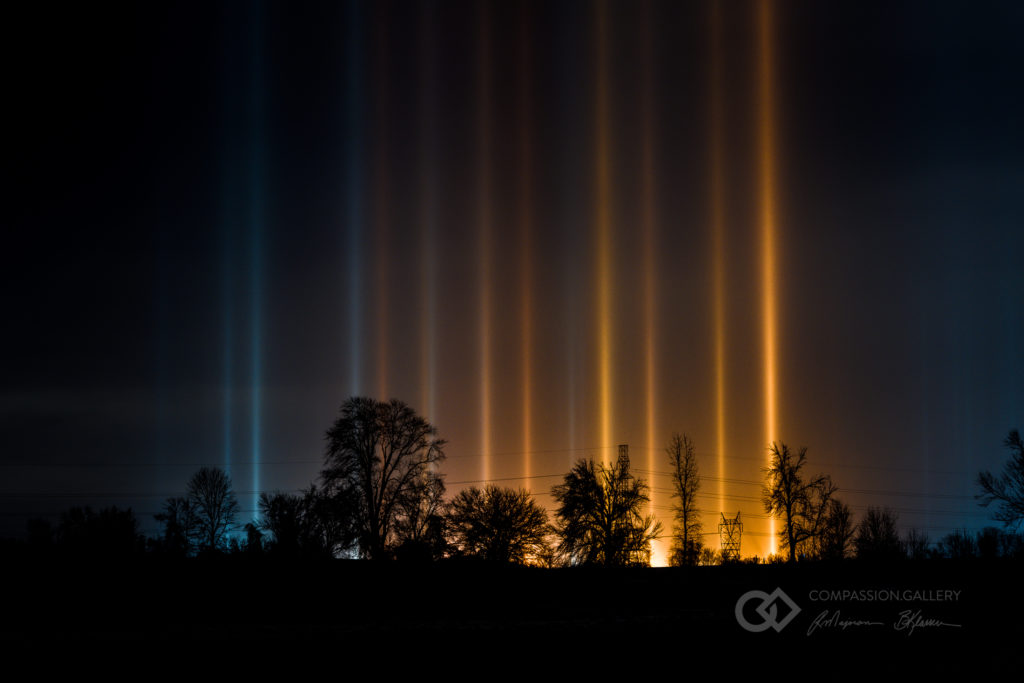
Trees III – Nikon D850, Nikkor 70-200 2.8G, ISO 100, f/7.1, 15s
I went on to The Weather Network and Weather Underground apps to check the forecast and radar loop. There were snowsqualls coming off Lake Huron, but they were dying out before they reached London. The forecast said the same thing as the one from New Year’s Eve: Ice crystals.
I pulled out of my driveway in the west end of London, and decided to drive south towards Highway 401. When I was almost to the highway, I saw faint light pillars to the north of the city. Had I made the wrong decision by going to the south end of the city? If I had, it was too late.
Driving on the 401, I couldn’t see any light pillars. Then it happened! As I approached the east end of London near Highbury Avenue, the sky became littered with light pillars. It was honestly the strangest thing I’d ever seen. There were stars above me, yet there were little crystals of ice falling like manna from heaven. They didn’t stick to the car or the road; they were just suspended in the air floating like pixie dust.
I pulled off the highway, set up my tripod, and for the next two hours had my mind blown by these things called light pillars.
HOW TO PHOTOGRAPH LIGHT PILLARS
Unlike photographing the northern lights, you don’t need to worry about getting your camera to the highest aperture / ISO setting. Because the lights are virtually stationary, you can shoot anywhere between f/4 and f/10 at 100-200 ISO. My shutter speeds varied anywhere from 6 to 30 seconds.
The color of each pillar is a reflection of the specific light it is reflecting. So, if it’s yellow, it’s likely an incandescent bulb, while if the pillar is blue, it’s probably an LED or fluorescent bulb.
Obviously, the conditions have to be perfect for ice crystals to form. Remember, this is not snow. This is a rare phenomenon of very light crystals of ice that hover in the atmosphere.
Below are a few of my photos. Enjoy!
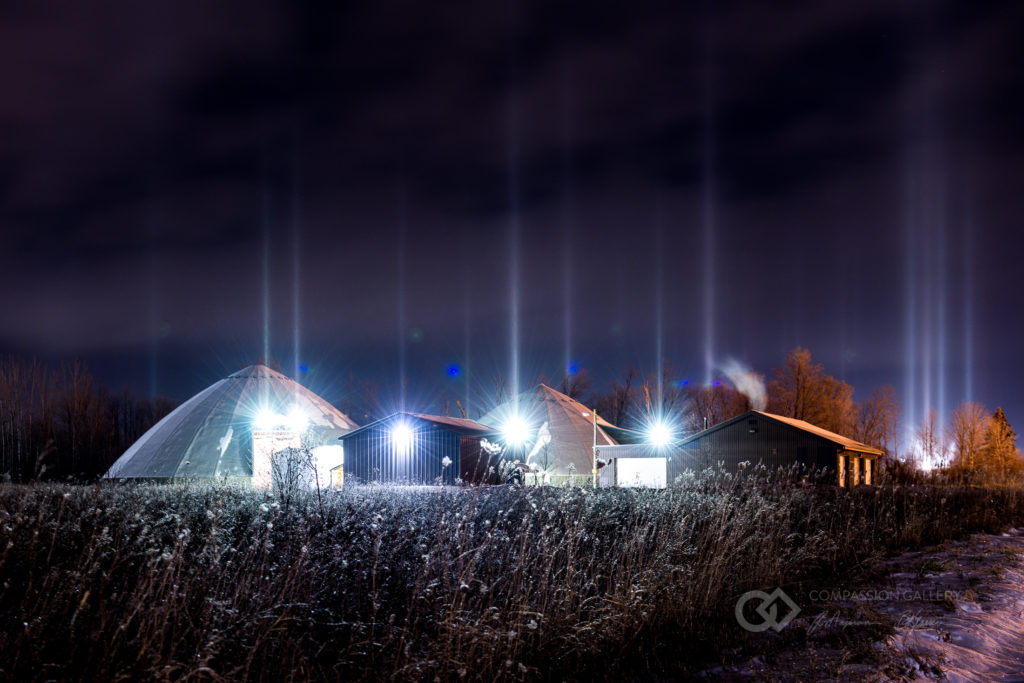
Storage Image – Nikon D850, Nikkor 24-70 2.8G, ISO 125, f/4, 6s
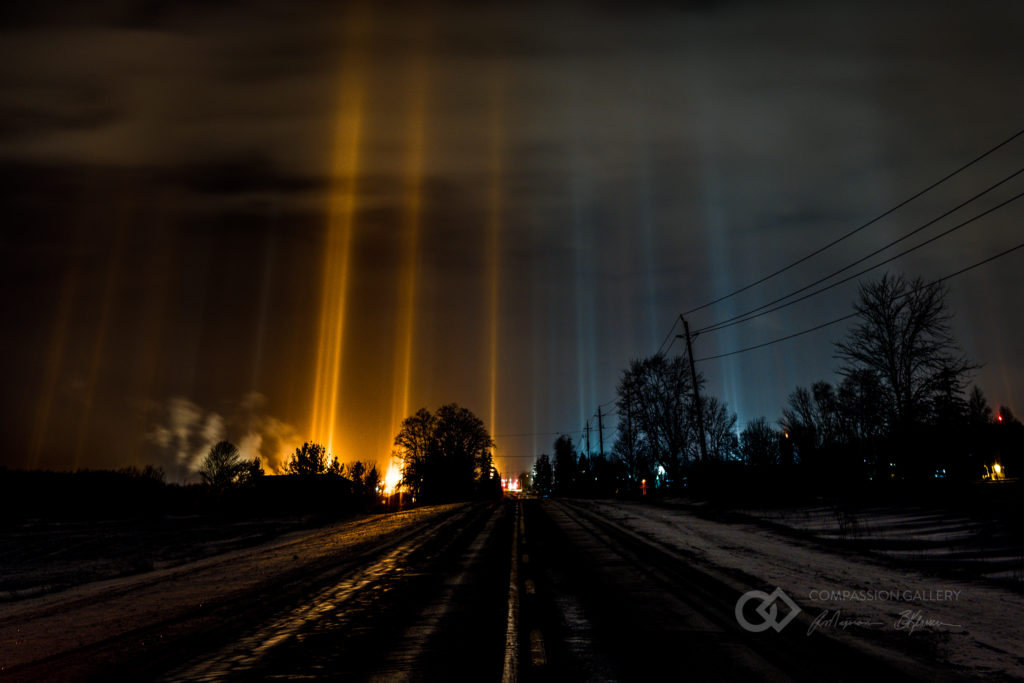
Tree Image – Nikon D850, Nikkor 24-70 2.8G, ISO 100, f/7.1, 8s

Trees III – Nikon D850, Nikkor 70-200 2.8G, ISO 100, f/7.1, 15s
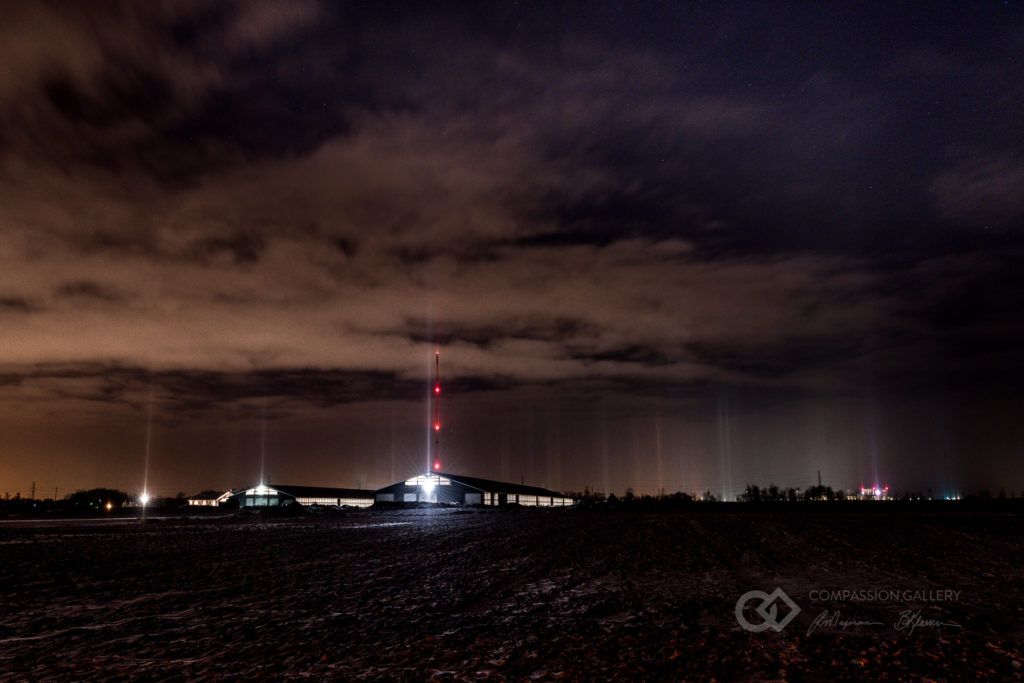
Field Image – Nikon D850, Nikkor 24-70 2.8G, ISO 100, f/7.1, 8s
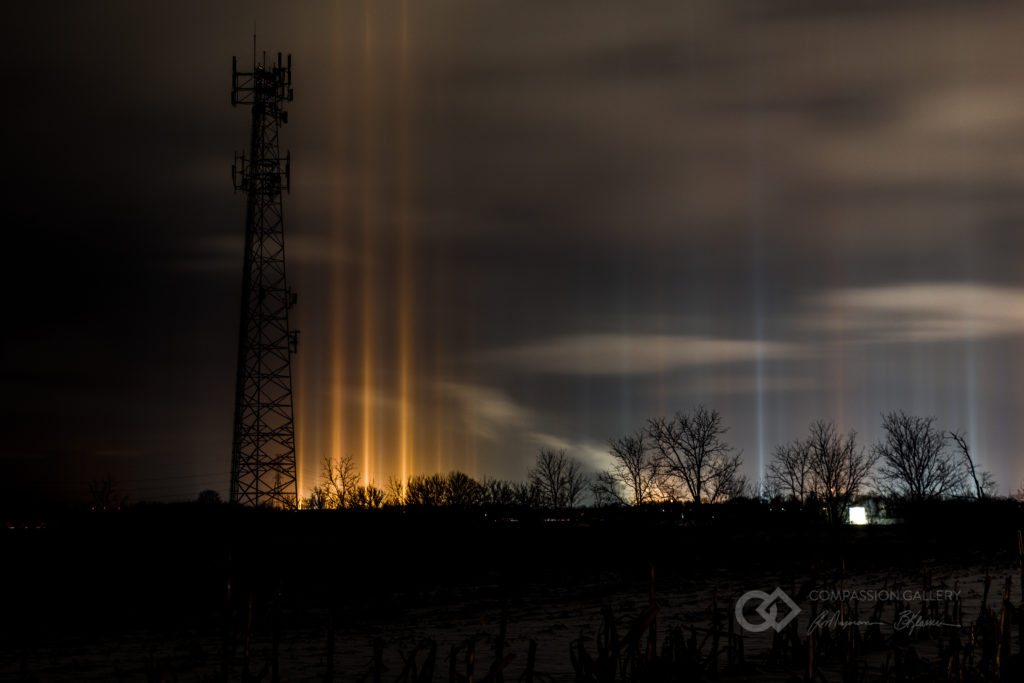
Tower image – Nikon D850, Nikkor 24-70 2.8G, ISO 100, f/7.1, 30s
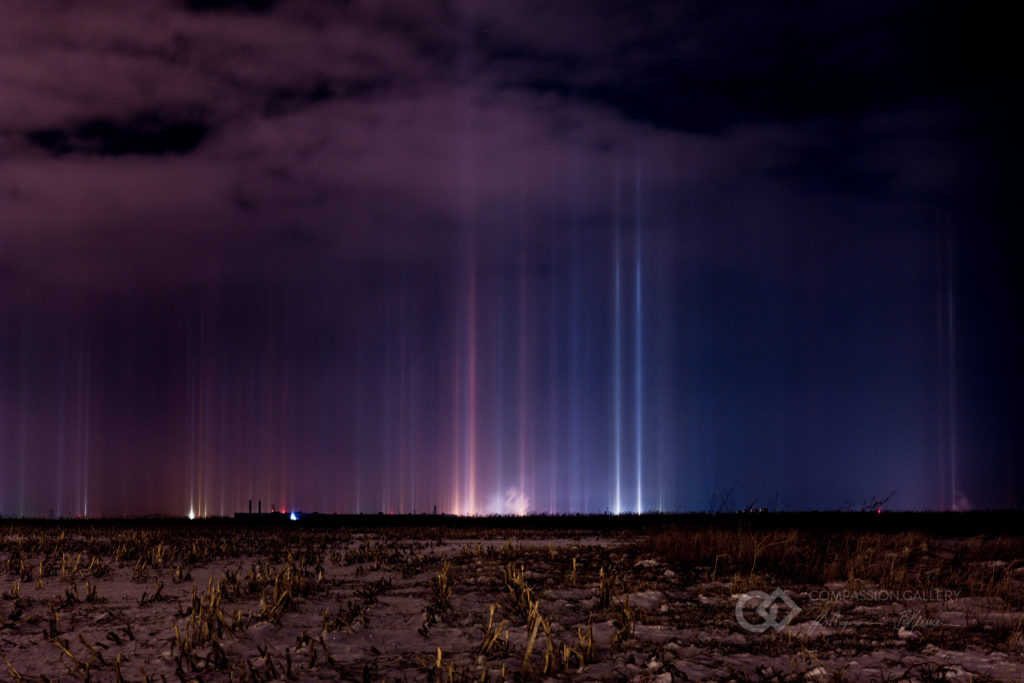
Field II – Nikon D850, Nikkor 24-70 2.8G, ISO 100, f/7.1, 8s
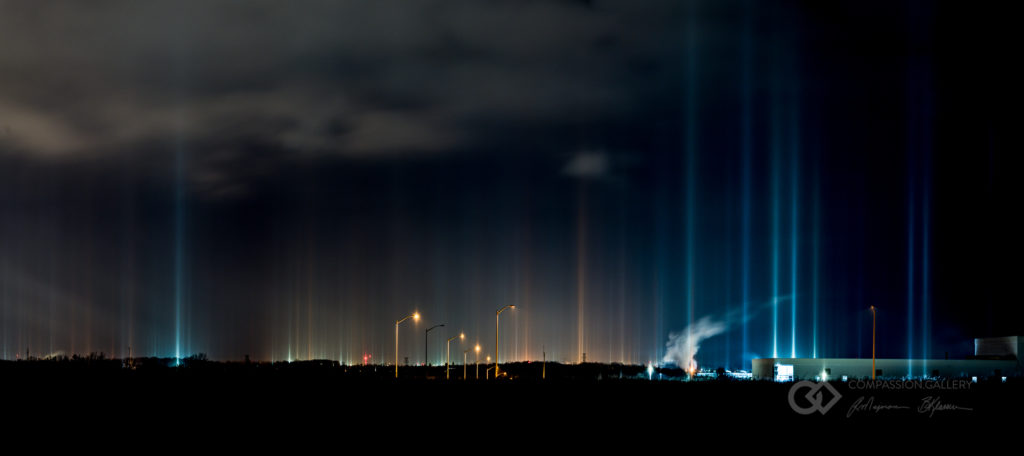
Field III – Nikon D850, Nikkor 70-200 2.8G, ISO 100, f/7.1, 15s, 2-stitch panorama
All images Copyright Ray Majoran // @raymajoran
About the Author
Ray Majoran – A London, Ontario photographer with a passion for creative photography. To view some of Ray’s photos visit https://yourbreathinme.com or follow Ray on Instgram at @raymajoran



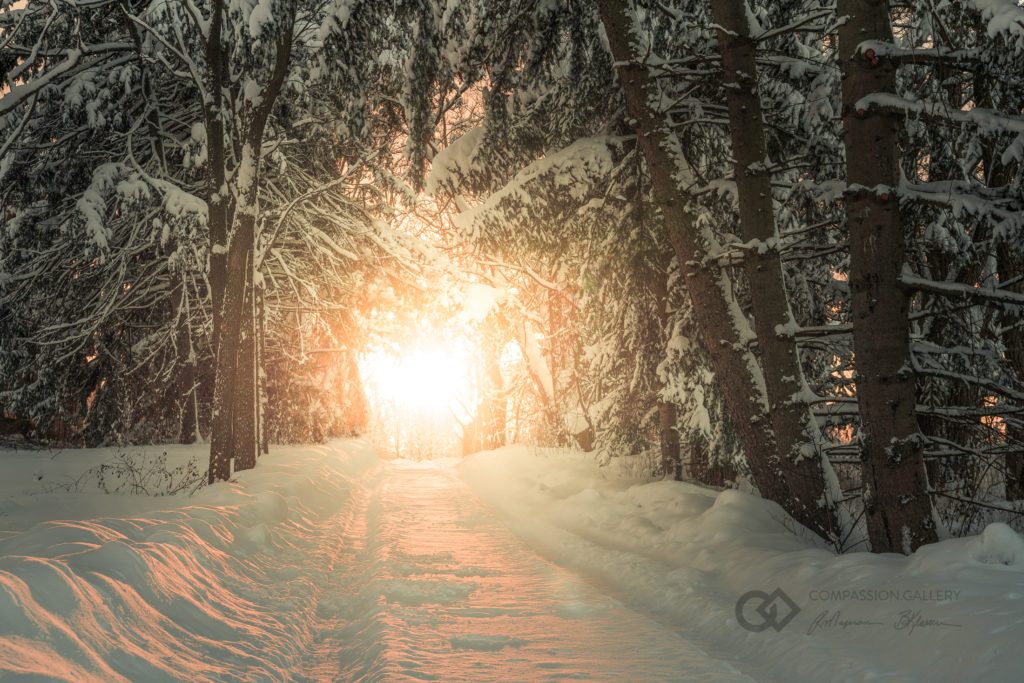
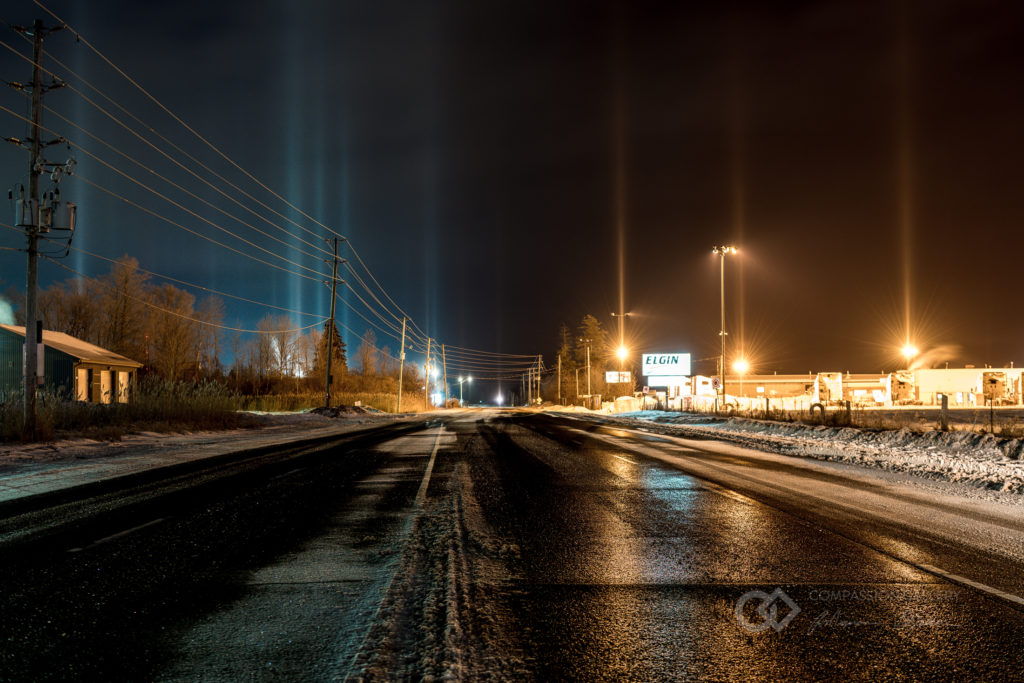




Beautiful Photography
love the photos. As a Sask resident, Regina to be specific I see this phenomenon usually every winter. Haven’t tried photographing but I will now. Thanks for sharing.
ce sont de vraiment belles photos, j’aime la luminosité de vos photos